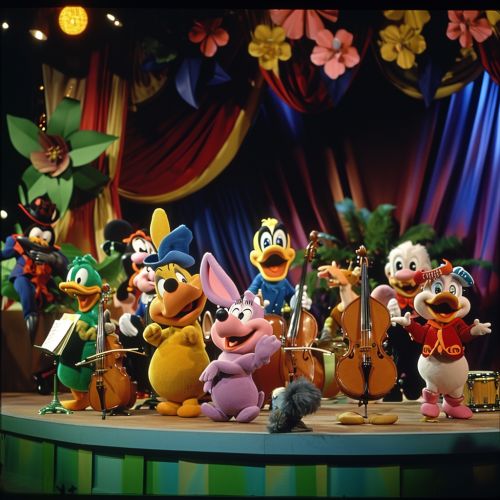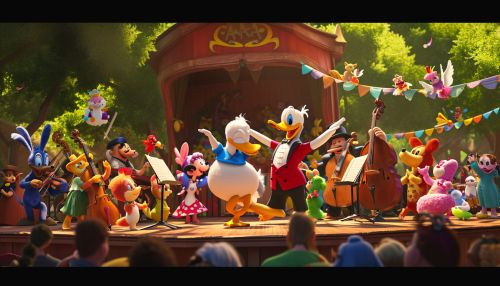Silly Symphonies
Overview
"Silly Symphonies" was a series of animated short films produced by Walt Disney between 1929 and 1939. Unlike the Mickey Mouse cartoon universe (with the exception of the Three Little Pigs and most notably Donald Duck who made his first appearance in a Silly Symphony), the Silly Symphonies did not have recurring characters and each one was depicted as a standalone story, each featuring different casts and plots


.
History
The Silly Symphonies were conceived by Walt Disney and his staff as a venue for experimenting with processes, techniques, characters, and stories in order to further the art of animation. It also provided a venue to try out techniques and technologies that would be crucial to Disney's plans for feature-length animated films.
Animation Style
The animation style of the Silly Symphonies was unique for its time. The series brought many innovations to the field of animation, including the introduction of Technicolor, the multiplane camera, and advanced narrative structures. The series also played a key role in the development of the character animation, which would become a standard in the industry.
Music
Music played a significant role in the Silly Symphonies. Each short in the series was built around a musical score written and conducted by Carl Stalling. The music was not merely a background element, but a driving force behind the narrative, characters, and visual aesthetics of each short.
Legacy
The Silly Symphonies series left a significant legacy in the world of animation. Many of the techniques and processes developed for the series were later used in Disney's feature films and other animated series. The series also influenced many other animators and studios, shaping the direction of animation for decades to come.
